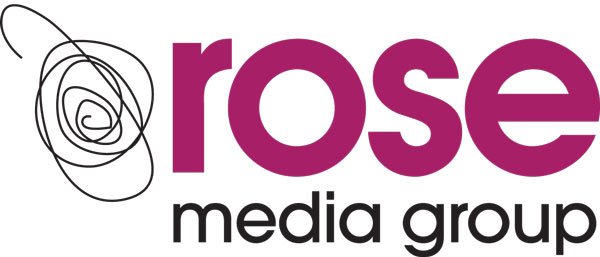Making the most of your social media can be difficult. There are literally hundreds of tools you can use and knowing where to start can be a little daunting. We’ve created this helpful guide based on our own experience to make executing your social media strategy as easy as possible.
Sprout Social (Scheduling & Analytics)
For scheduling posts, there are cheaper options on the market than Sprout (Hootsuite & Buffer for example), but the value here really comes in the form of the analytics. Detailed reports that link your social media engagement activity with your website traffic (once connected with Google Analytics) make it an extremely powerful tool, especially when you have to show your boardroom the data.
The scheduling is all done via a simple calendar view, and the option to post the same message on multiple dates at varying times can really help save time whilst maximising your digital presence.
Pros
- Easy to use scheduling that works with Facebook, Twitter, LinkedIn and Google+
- In depth reports for the above channels as well as Instagram; with colourful charts and graphs automatically generated
- Links with your Feedly account for easy content curation
Cons
- Not the cheapest tool on the market (pricing starts from $59)
- No message bank storage (which would allow for automatic posting of key messages over a period of time)
Alternatives: HootSuite, Buffer
Social Oomph (Scheduling)
Whilst you may find Sprout more than enough for your scheduling needs, Social Oomph really comes in to its element if you are posting a large number of messages. The ‘Queue Reservoirs’ feature will allow you to build a bank of important messages (blog posts, images, quotes) that you want to reuse again and again. By using a simple string of code you can reword the post so that each time it is used it uses a different variation of text, meaning your messaging stays fresh without you having to spend hours every week rewriting your posts.
 As an agency, we have found this utterly invaluable, and if you want to post to Twitter more than 3 times a day this will free up your time quite considerably. The layout is not 100% user friendly, so it may take some time to learn how to navigate the menu systems, but once you do you will be amazed at the power this tool gives you to get on with other aspects of your business. The cost is quite affordable too, coming in at around $35 per month, or $15 if you just want to use it for Twitter only.
As an agency, we have found this utterly invaluable, and if you want to post to Twitter more than 3 times a day this will free up your time quite considerably. The layout is not 100% user friendly, so it may take some time to learn how to navigate the menu systems, but once you do you will be amazed at the power this tool gives you to get on with other aspects of your business. The cost is quite affordable too, coming in at around $35 per month, or $15 if you just want to use it for Twitter only.
Pros
- Powerful scheduling options via the ‘Queue Reservoir’ will allow you to super charge your digital presence without sinking hours of time in to scheduling.
- Great value for money (around $15 for Twitter or $35 for Facebook & LinkedIn as well).
Cons
- Clunky user design means it’s not the easiest to navigate. It could do with a visual overhaul.
- Requires a little more time to learn some of the coding to get the most out of its features.
Alternatives: Edgar, SMQueue
ManageFlitter (Twitter Audience Building)
If you want to build your Twitter empire fast and without an advertising budget then ManageFlitter is the tool for you. The tool will allow you to find new followers, with parameters and built in limitations that ensure you avoid acting spammy and getting suspended by Twitter. You can quickly identify key influencers, followers of competitors and people who engage with you and segment them in to lists. You can also unfollow people who either do not follow you back or are no longer active. This tool makes it very easy to grow your Twitter base by 50-100 relevant users per week without risk of suspension or spamming users.
Pros
- Quickly build the number of relevant followers to your brand
- Easy to set up and get started
Cons
- Can be slow to create user lists unless you pay for the higher price band
Alternatives: Crowdfire
Feedly (Content Curation)
This tool is great for curating content from various RSS feeds across the web. The free version is usually more than ample for your needs (the pro version is $5 per month and has a few extra tools you may or may not use). You can search for blog RSS feeds within the app, as well as adding your own from across the web (this can be done incredibly fast with the Chrome extension). Once added to a group you can then see all the updates in chronological order allowing you to keep up with the latest news in one place.
Pros
- Free / very affordable
- Easy to set up and use
Cons
- Difficult to move existing RSS feeds to different or multiple groups
Alternatives: Netvibes, NewsBlur
TweetDeck (Twitter Monitoring)
The simple column based views make monitoring multiple conversations across various accounts very easy. The software is free and Twitter updates it regularly alongside the changes they are making across their platform which means you will probably always have it open ready to tweet in the background.
Pros
- 100% Free
- Engage with audiences across multiple accounts based on custom lists, hashtags or keywords.
Cons
- No mobile app
- Windows version does not support video playback
Alternatives: Twitter Web Client, HootSuite
Google Analytics (Web Traffic Reporting)
When measuring web traffic, Google Analytics is a real must have. For starters it is free, and with most content management systems extremely easy to set up. There is so much data in this tool that it can be a little daunting at first, but there are free downloadable custom dashboard options that can make understanding the Social Media data much easier. These can also be exported via PDF to add to your reports.
Pros
- Free and relatively easy to install
- Huge amounts of data recorded
Cons
- Amount of data available may seem overwhelming to understand
Alternatives: Hotjar
Contact us for professional advice and training on using these tools, or let us do the hard work with one of our affordable Social Media Management plans.


















